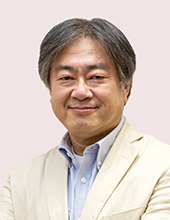
Yasuhiro YAMADA
Principal Investigator
Professor, Graduate School of Humanities, Tokyo Metropolitan University
Archaeology is a study of probability. The research is conducted while considering what approach is closest to the reality of the time. However, nowadays, we can get closer to the truth by using physical and chemical analyses such as dating, carbon and nitrogen isotope analysis, strontium isotope analysis, and DNA analysis in parallel with archaeological analysis. In this field research, Group A01 is responsible for studying the social structure of prehistoric humans using archaeological methods and proposing hypotheses to be tested using anthropological methods.
Team Members and Research Themes
- Tomoya AONO (Professor, Faculty of Arts, Tohoku University of Art & Design): Research on the Jomon Grave System and Society in Eastern Japan
- Kyoko FUNAHASHI (Associate Professor, Faculty of Comparative Studies in Society and Culture, Kyushu University): Research on the Jomon-Yayoi Grave System and Society in Western Japan
- Shin HIDAKA (Professor, Faculty of Education, Tokyo Gakugei University): Grave system and society of the Kofun period in Eastern Japan
- Junichiro TSUJITA (Professor, Faculty of Humanities, Kyushu University): Grave System and Society of the Kofun Period in Western Japan
Outline of Research
Group A01 is responsible for studying the social structure of prehistoric humans using archaeological methods and proposing hypotheses to be tested using anthropological methods. Specifically, in cemeteries and grave sites at archaeological sites in various regions (the term is used to refer to the Paleolithic, Jomon, Yayoi, and Kofun periods, given that writing was not primarily used), we are extracting grave groups (concentration of human remains), which have been regarded as burial sites for families, households and specific individuals that seem to show hierarchical characteristics from an archaeological perspective.
We will develop archaeological hypotheses about the kinship and social structure of the period to which the site belongs by examining archaeological burial attributes (burial site, burial posture, direction of head, accessories, presence and types of burial accessories, tooth extraction system, etc.).
Furthermore, in collaboration with Groups A02 and A03, we will conduct dating, carbon, nitrogen, and strontium isotope analysis, and DNA analysis in order to verify our hypotheses. The hypotheses presented here will also be shared with Groups B and C, and will become issues to be verified. By presenting a prehistoric society model hypothesis to be tested, this research group will lead to elucidation of prehistoric human society in the Japanese Archipelago, and by integrating the research results of other groups, we will contribute to create a new academic field, "integrative bioarchaeology”

